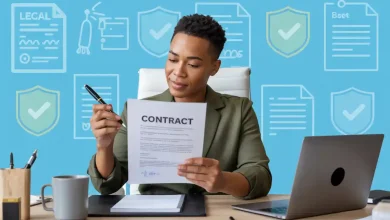Intellectual Property Basics: Key to Startup Protection
Understanding the Legal Boundaries of What You Say on the Internet

Intellectual property basics are a must-know for anyone starting or running a business. In today’s world, your ideas and creativity are just as valuable as your physical products. Protecting them can mean the difference between success and failure. This guide will help you understand what intellectual property basics are, why they matter, and how you can use them to keep your startup safe and strong.
What Is Intellectual Property?
Intellectual property basics start with understanding what intellectual property (IP) means. IP is the legal rights you have over things you create with your mind. This includes inventions, designs, brand names, and creative works. Protecting your IP helps stop others from copying or stealing your ideas.
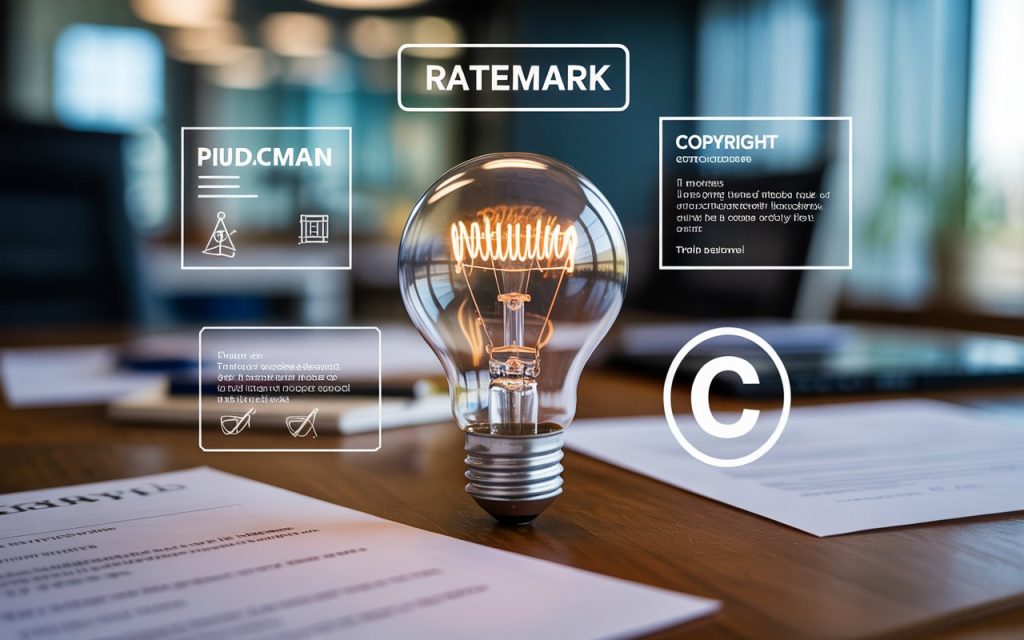
Why Intellectual Property Matters for Startups
For startups, intellectual property basics are especially important. Here’s why:
- Protects your ideas: Keeps others from using your inventions or designs without permission.
- Builds value: Investors and partners look for strong IP protection before investing.
- Gives you a competitive edge: Unique ideas and brands help you stand out in the market.
- Prevents legal problems: Proper IP protection reduces the risk of lawsuits.
Types of Intellectual Property
There are four main types of IP that startups should know about:
1. Patents
A patent protects inventions and new technology. If you invent something new and useful, you can apply for a patent to stop others from making, using, or selling your invention without your permission.
2. Trademarks
A trademark protects your brand name, logo, and slogans. It helps customers recognize your products and stops others from using similar names or logos.
3. Copyrights
A copyright protects creative works like writing, music, art, and software code. It gives you the right to control how your work is used and copied.
4. Trade Secrets
A trade secret is information that gives your business an advantage and is kept secret. Examples include recipes, customer lists, and manufacturing processes.
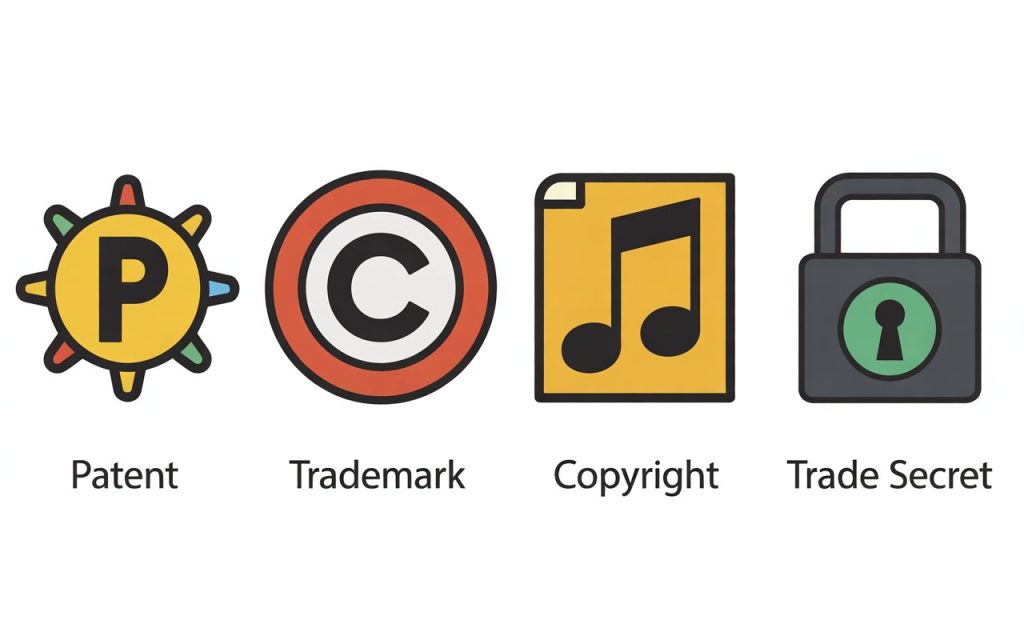
Table: Types of Intellectual Property
| Type | What It Protects | Example |
|---|---|---|
| Patent | Inventions, technology | New machine, software process |
| Trademark | Brand names, logos, slogans | Apple logo, Nike slogan |
| Copyright | Creative works, software | Book, song, website code |
| Trade Secret | Secret business information | Coca-Cola recipe, customer list |
How to Protect Your Intellectual Property
Understanding intellectual property basics means knowing how to protect your ideas. Here are some simple steps:
1. Identify Your IP
Start by listing all the things your startup creates: inventions, designs, brand names, and creative works.
2. Decide Which Type of Protection You Need
Use patents for inventions, trademarks for brands, copyrights for creative works, and trade secrets for private information.
3. Register Your IP
For patents, trademarks, and copyrights, you need to apply with the government. Trade secrets are protected by keeping the information confidential.
4. Use Contracts
Have employees and partners sign agreements to keep your IP safe. This includes non-disclosure agreements (NDAs) and non-compete clauses.
5. Monitor and Enforce
Watch for others using your IP without permission. If you find someone copying your ideas, take legal action to stop them.
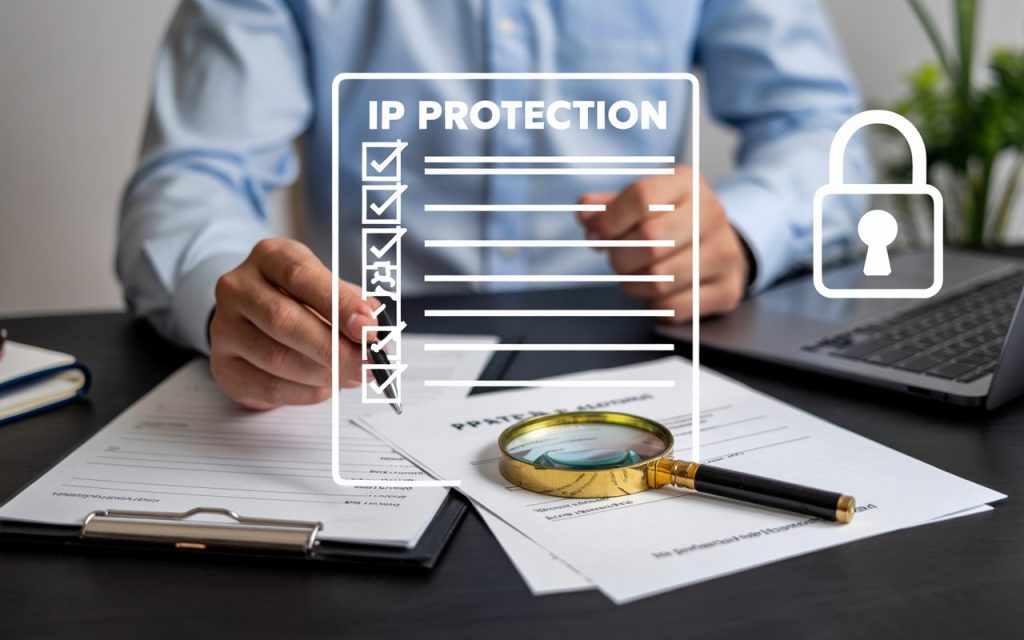
Common Mistakes Startups Make with Intellectual Property
Many startups make mistakes when it comes to intellectual property basics. Here are some to avoid:
- Not protecting IP early: Waiting too long can mean someone else takes your idea.
- Not registering trademarks: This can lead to brand confusion and legal fights.
- Sharing ideas without NDAs: Talking about your ideas without protection can mean losing them.
- Ignoring international protection: If you plan to sell abroad, you need to protect your IP in other countries too.
How to File for Intellectual Property Protection
Here’s a simple guide to filing for different types of IP:
1. Patents
- Research: Check if your invention is new.
- Prepare application: Describe your invention in detail.
- Submit: File with the patent office in your country.
- Wait: It can take months or years to get approved.
2. Trademarks
- Search: Make sure your brand name or logo isn’t already taken.
- Apply: Submit your trademark application.
- Monitor: Watch for others using similar names or logos.
3. Copyrights
- Create: Make your creative work.
- Register: File for copyright (not always required, but helpful).
- Use notice: Add a copyright notice (©) to your work.
4. Trade Secrets
- Keep secret: Only share with people who need to know.
- Use NDAs: Have anyone who sees the secret sign a contract.

The Cost of Protecting Intellectual Property
Protecting your IP can cost money, but it’s worth it. Here’s what you might pay:
- Patents: Can cost thousands of dollars and take years.
- Trademarks: Usually a few hundred dollars.
- Copyrights: Often less than $100.
- Trade secrets: Main cost is keeping the information safe.
Why Investors Care About Intellectual Property
Investors look for startups with strong IP protection. It shows your business is unique and has value. If you don’t protect your IP, investors may not want to invest.
International Intellectual Property Protection
If you plan to sell your products or services in other countries, you need to protect your IP there too. Each country has its own rules and processes. It can be complicated, but it’s important if you want to grow your business globally.
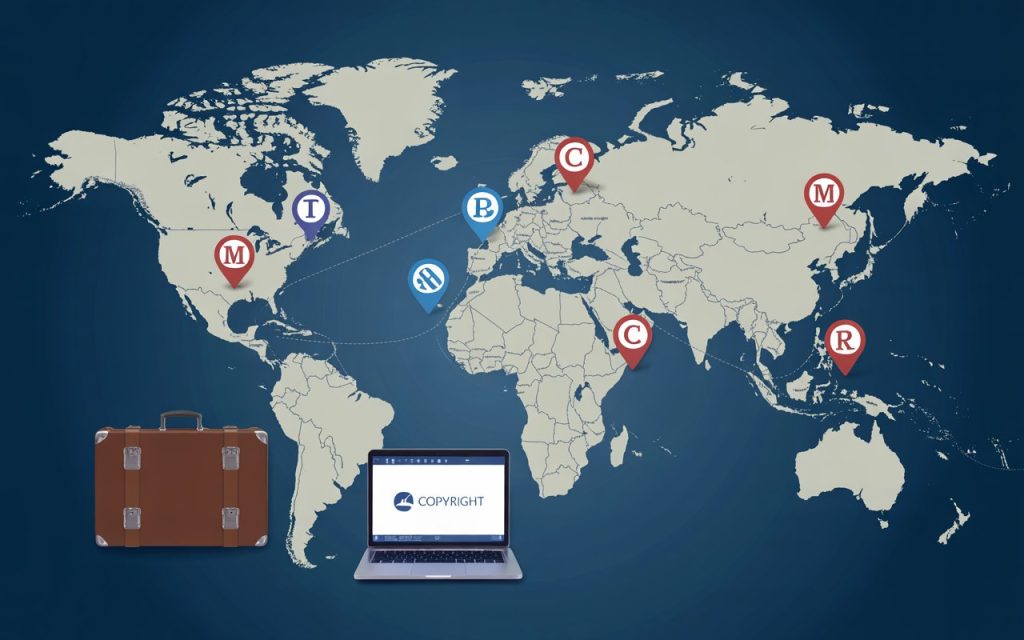
How to Avoid Intellectual Property Disputes
Disputes over IP can be expensive and stressful. Here’s how to avoid them:
- Do your research: Make sure your ideas and names aren’t already taken.
- Register your IP: This gives you legal rights to stop others.
- Use contracts: Protect your secrets and ideas with NDAs.
- Be careful online: Don’t share too much about your ideas before they’re protected.
What to Do If Someone Steals Your Intellectual Property
If you find someone using your IP without permission, here’s what to do:
- Collect evidence: Save copies of the infringement.
- Contact a lawyer: Get legal advice.
- Send a cease and desist letter: Ask the person to stop using your IP.
- Take legal action: If they don’t stop, you may need to go to court.
The Role of Intellectual Property in Startup Success
Intellectual property basics are a key part of building a successful startup. They help you protect your ideas, build your brand, and attract investors. Without IP protection, your business is at risk.
How to Educate Your Team About Intellectual Property
Make sure everyone in your startup understands intellectual property basics. Hold training sessions, share guides, and remind your team to keep your ideas safe.

Real-Life Examples of Intellectual Property in Startups
- Apple: Protects its technology with patents and its brand with trademarks.
- Coca-Cola: Keeps its recipe a trade secret.
- Google: Uses patents for its search technology and trademarks for its name.
Frequently Asked Questions (FAQs)
Q: What are intellectual property basics?
A: Intellectual property basics are the fundamental rules and rights that protect your ideas, inventions, brands, and creative works.
Q: Why do startups need to protect their intellectual property?
A: Protecting IP helps startups keep their ideas safe, build value, and avoid legal problems.
Q: What are the main types of intellectual property?
A: The main types are patents, trademarks, copyrights, and trade secrets.
Q: How do I protect my startup’s intellectual property?
A: Identify your IP, decide which type of protection you need, register your IP, use contracts, and monitor for infringement.
Q: What should I do if someone steals my intellectual property?
A: Collect evidence, contact a lawyer, send a cease and desist letter, and take legal action if needed.
Q: How much does it cost to protect intellectual property?
A: Costs vary: patents can be expensive, trademarks are usually a few hundred dollars, copyrights are cheap, and trade secrets mainly require keeping information safe.
Q: Do I need to protect my intellectual property in other countries?
A: Yes, if you plan to do business abroad, you need to protect your IP in those countries.
Q: What is a non-disclosure agreement (NDA)?
A: An NDA is a contract that keeps your ideas secret by stopping others from sharing them.
Table: Intellectual Property Protection Checklist
| Step | What to Do |
|---|---|
| Identify IP | List all your inventions, brands, and works |
| Decide protection type | Choose patent, trademark, copyright, or secret |
| Register IP | File with the government if needed |
| Use contracts | Have employees and partners sign NDAs |
| Monitor for infringement | Watch for others using your IP |
| Take action if needed | Contact a lawyer and enforce your rights |
How Intellectual Property Affects Your Business Model
Your business model depends on your ability to protect and use your IP. Strong IP protection can help you:
- Charge more for your products or services.
- License your technology to others.
- Attract investors and partners.
- Build a strong brand.
The Future of Intellectual Property for Startups
As technology changes, intellectual property basics become even more important. New types of IP, like software and digital content, are being created all the time. Staying up to date with IP laws will help your startup stay ahead.

How to Stay Informed About Intellectual Property
- Follow IP news and blogs.
- Attend workshops and webinars.
- Talk to other entrepreneurs.
- Consult with a lawyer.
The Importance of Intellectual Property for Funding
Investors and lenders want to know your startup’s IP is protected. It shows your business is unique and has value. Without IP protection, it can be hard to get funding.
How to Build an Intellectual Property Strategy
A good IP strategy includes:
- Identifying your most valuable IP.
- Deciding how to protect it.
- Monitoring for infringement.
- Enforcing your rights.

Common Legal Terms in Intellectual Property
- Patent: Legal right to an invention.
- Trademark: Legal right to a brand name or logo.
- Copyright: Legal right to creative works.
- Trade secret: Secret business information.
- Non-disclosure agreement (NDA): Contract to keep ideas secret.
How to Use Intellectual Property to Grow Your Startup
- License your technology to others.
- Sell products under your own brand.
- Use your IP to attract investors.
- Expand into new markets with protected ideas.
The Risks of Not Protecting Your Intellectual Property
If you don’t protect your IP, you risk:
- Losing your ideas to competitors.
- Facing legal problems.
- Losing investors and customers.
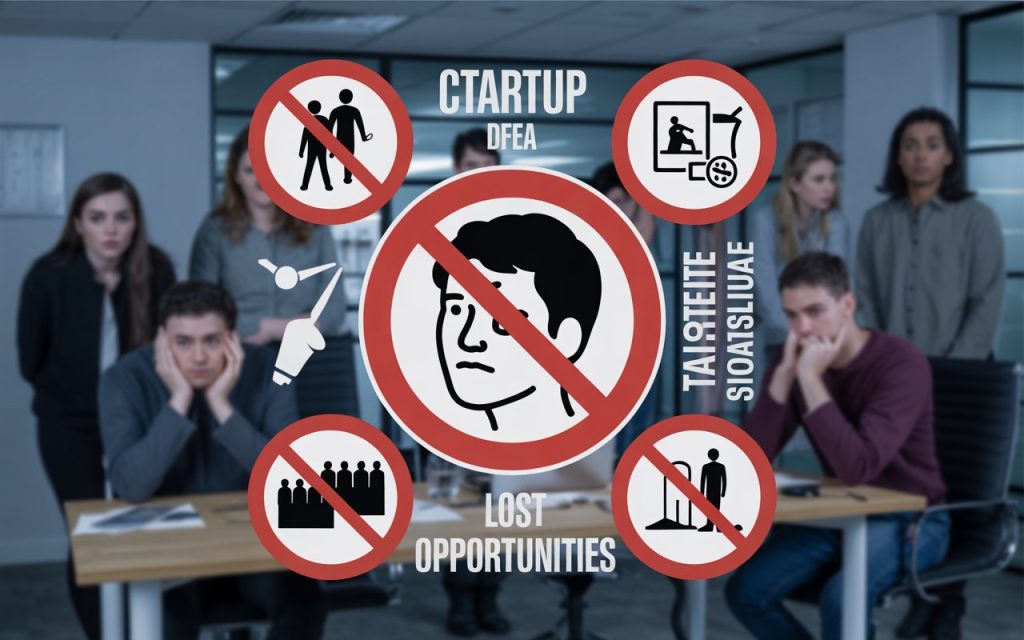
How to Get Help with Intellectual Property
If you’re not sure how to protect your IP, talk to a lawyer who specializes in intellectual property basics. They can help you understand your rights and options.
Final Thoughts
Intellectual property basics are essential for every startup founder. Protecting your ideas, inventions, and brand helps you build a strong, successful business. By understanding and using IP protection, you can keep your startup safe and set it up for long-term success.

